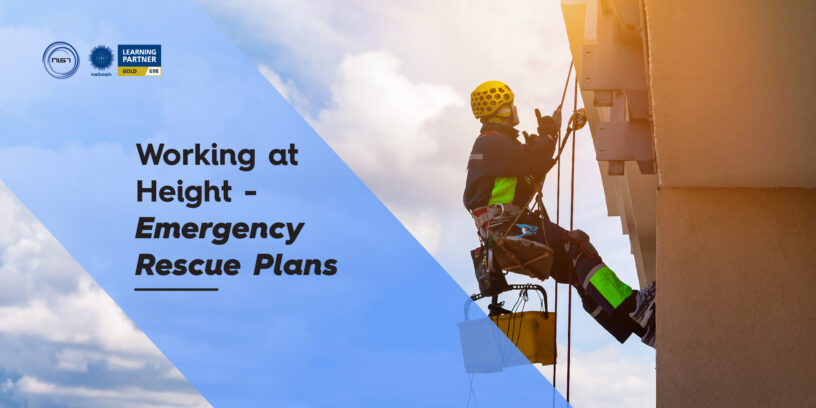Working at a height has a unique combination of potential hazards and challenges, with the most serious one being the requirement for quick action in the event of a fall. Even with strict safety measures in place, accidents are still a possibility. Having a well-thought-out and efficient emergency rescue strategy in place is therefore crucial. A quick and effective rescue effort can reduce the possibility of serious injuries and frequently mean the difference between life and death.
A rescue plan for working at height is said to be a predefined & well-thought-out strategy designed to securely remove a person who has fallen from a height, is suspended in their fall protection equipment, or can no longer safely descend without help.
Major components of a rescue plan include:
Preparation: This entails selecting, maintaining, and training workers on how to use the appropriate fall protection and rescue equipment. The strategy should be site-specific, taking into account all potential dangers and environmental factors at the site of the activity at height.
Immediate Action: The plan should specify what should be done right away following a fall. A site manager or safety officer may need to be informed, an emergency call may need to be placed, or self-rescue or aided rescue techniques may need to be initiated.
Rescue protocols: To safely recover the injured worker, rescuers must adhere to these specific, step-by-step protocols. Various rescue situations, such as self-rescue, assisted self-rescue, completely assisted rescue, ladder rescue, or aerial lift rescue, can be included. The strategy should be adjusted to the particular task location and working circumstances.
After-Rescue action: The plan should outline what medical attention should be provided once a worker has been saved, who should be informed, and how to document and report the incident. In order to improve procedures and stop recurrences, it should also direct the review and assessment of the incident.
Training and Drills: A regular training schedule and practice drills should be a part of the rescue plan to make sure that personnel are familiar with the protocols and can carry them out promptly and successfully in a crisis.
Regular Inspection and Maintenance: All fall protection and rescue equipment should be regularly inspected and maintained as part of the rescue strategy to guarantee that it is in excellent working order.
A rescue plan for high-rise work is more than just a document. It is a live system that necessitates continual assessment and updating in response to modifications in working circumstances, the addition of new equipment, or the lessons learnt from mistakes or near-misses.
Conclusion
Everyone must be familiar with their responsibilities and be able to carry them out effectively and efficiently when called upon, which requires regular training, drills, and equipment inspections. By placing a strong emphasis on safety and preparedness, a well-executed rescue plan not only saves lives but also creates a workplace that is safer.
Work at Height Rescue Training @ NIST Global
If you are looking to train your workers on Work at Height Rescue Training, Kindly call us @ +91 8754465588 / info@nistglobal.com.
You can also view our training details here: https://www.nistglobal.com/working-at-height-rescue-training.php














Leave a Reply